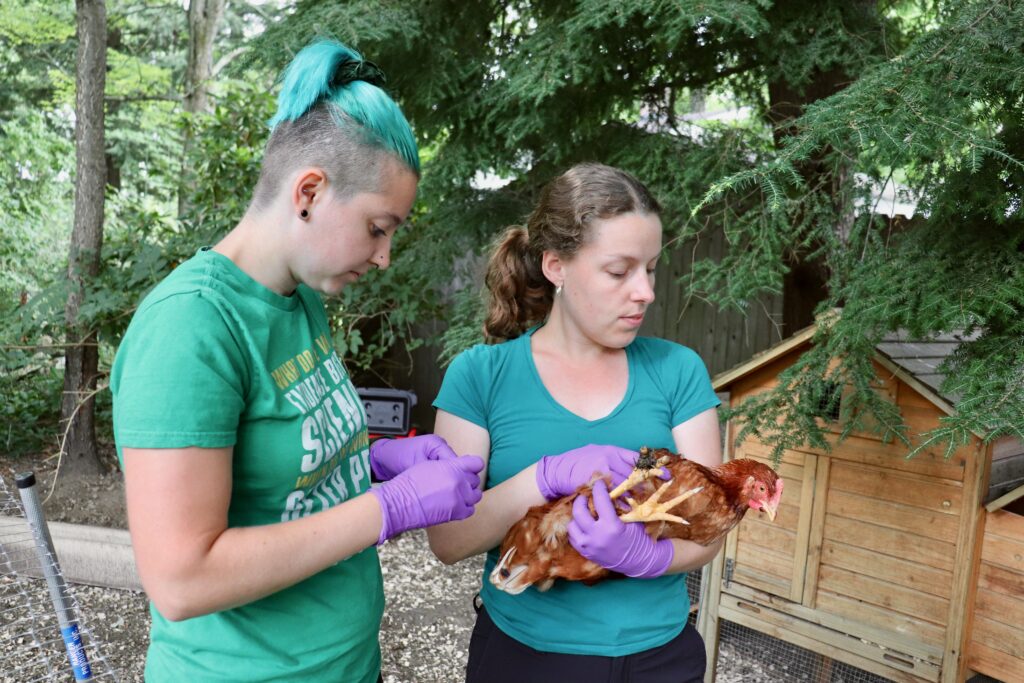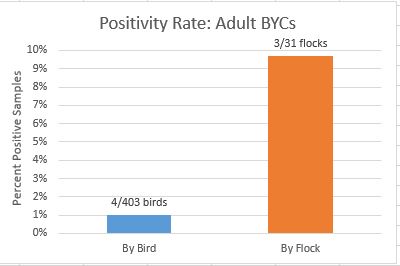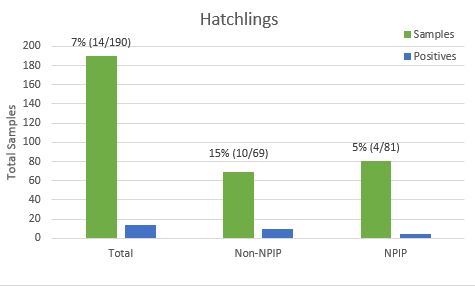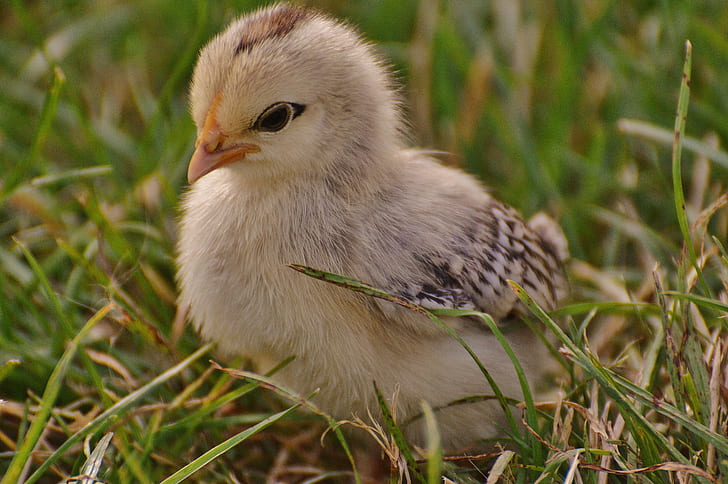Chicks and Salmonella update
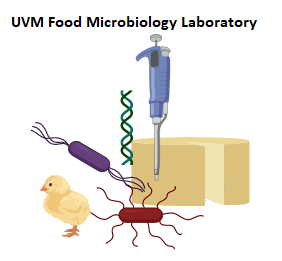
Sorry it’s been a while. We had a contaminated pipette shedding Salmonella into our samples, so we were delayed while we switched out pipettes, cleaned everything, implemented more stringent controls, and re-ran all our positive samples (we almost always collect more sample than we need and have the extra frozen).So here we are, in the third week of July, with nearly all the summer’s samples collected, and having run 177 samples since March 2020, while more than 90 samples remain in our freezers waiting to be run.
We have 16 PCR-confirmed positives out of 177 samples, for an all-time total of 9.0% of chicks positive for Salmonella. Of these, 7/89 come from NPIP-certified hatcheries, while 9/59 come from non-NPIP certified hatcheries. Another 29 samples came from individuals, with unknown sourcing.
So what does this mean?
- Almost 10% of all chick shipments are positive for Salmonella. This isn’t terrible, but it’s not great.
- The numbers for just this year’s samples are worse, with 15.5% of samples positive for Salmonella. This may be due to study design vs an increase in Salmonella-positive chicks.
- Chicks from non-NPIP hatcheries are roughly 2x as likely to contain Salmonella.
- NPIP certification does not appear to be entirely solving the problem. This may be in part because ag stores don’t always use the same hatchery year to year; if they re-use equipment from a hatch/shipment with Salmonella, there is a risk of passing it on to the new chicks. I’ve reached out to NPIP representatives to get a better idea of what the expected rate of Salmonella would be in NPIP-certified flocks, but no response yet.
- Store setup matters; leaving chicks in open pens is a greater risk to both the customers and the chicks. It’s better to leave chicks inaccessible to customers. Cleaning between shipments is also vital.
What can you do about this?
- Assume your chicks could have Salmonella
- Don’t kiss your chicks or hold them near your face. Chicks are messy creatures and may have fecal material on their feathers. Feces can be extremely Salmonella-rich (besides being gross)
- Supervise kids around chicks. It’s ok to pet them, but kids should wash their hands afterwards
- Wash your hands after cleaning chick pens or waterers and don’t clean out your chick equipment in the kitchen sink (bathtub is a better choice)
